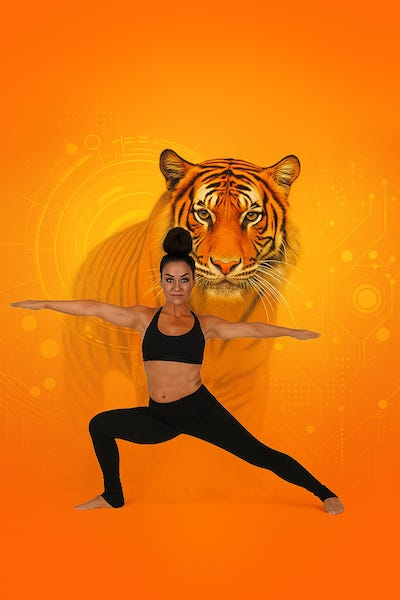Preface: The Missing Cues
The hidden mechanics that keep your body safe (and why nobody's teaching them)
The hidden mechanics that keep your body safe (and why nobody’s teaching them)
Bikram Yoga—the 26 postures and 2 breathing exercises—is marketed as a healing, therapeutic sequence. And it can be. But over the years, I noticed something missing: the cues.
Not the ones about Japanese ham sandwiches or flower pedals blooming—I’m talking about the hidden mechanics that keep the body safe and make the practice sustainable for a lifetime.
The kind of cues you don’t hear in most yoga rooms but that are standard in strength training, physical therapy, and athletic performance.
The First Time I Heard Them
It wasn’t from a yoga teacher.
It was from people like Dr. Kelly Starrett, Dr. Emily Splichal, Dr. Stuart McGill, Katy Bowman, and Tom Myers.
They weren’t talking about yoga at all.
They were talking about torque, fascial lines, joint centration, foot activation—the stuff that keeps athletes on the field, runners out of the injury cycle, and movers of all kinds feeling younger than their years.
The more I studied, the more I saw the same principles hiding inside the 26 & 2.
Only no one was pointing them out.
The Revelation
That’s when it hit me:
Bikram Yoga isn’t broken. The instructions are just incomplete.
This book is about filling in those gaps.
Giving you the torque, rotation, and activation cues that make the difference between wearing your body down and building it up.
Think of it as the “owner’s manual” to the 26 & 2, rewritten with the science of movement in mind.
What You’ll Discover:
Skillful Movement Patterns – How your body organizes, not just in yoga but everywhere
Bulletproof Spine – McGill’s principles work whether you’re in Triangle Pose or hauling groceries
Heat as Technology – Hormesis, heat shock proteins, cardiovascular adaptation. The heat isn’t just tradition—it’s a biohacking tool
Ten Laws of Intelligent Movement – Not my laws. Your body’s laws. Physics’ laws. Universal. Non-negotiable.
Real Stability – Not locked joints. Dynamic, tiger-style readiness.
Fascial Integration – How Thomas Myers’ Anatomy Trains connect through every movement, creating whole-body intelligence
The Bridge Between Worlds
This book isn’t anti-Bikram. It’s pro-intelligence.
Ancient yogic wisdom meets actual movement science.
There was clearly wisdom passed down from the ancient yogis. But maybe it got lost in Sanskrit, lost in broken English.
Like a game of telephone we’ve been playing for 5000 years.
No more blind faith. No more “because Bikram said so.”
This is about respecting our bodies enough to understand what we’re asking them to do.
Ready to see what’s been missing?
Let’s dial in.
P.S. – If traditional cues work perfectly for you, fantastic. Keep using them. This book is for everyone else—the ones who’ve been struggling, wondering if it’s their body that’s wrong. It’s not. You just need different instructions to get to the same powerful place.
Coming up next: The moment I threw out the script and watched 20 bodies reorganize themselves in real-time—no commands, no corrections, just pure biomechanics. The day I discovered what McGill, Starrett, and Splichal had been proving in labs for decades: your body doesn’t need orders, it needs the right input.
Read Chapter 1: The DC Studio Revelation



